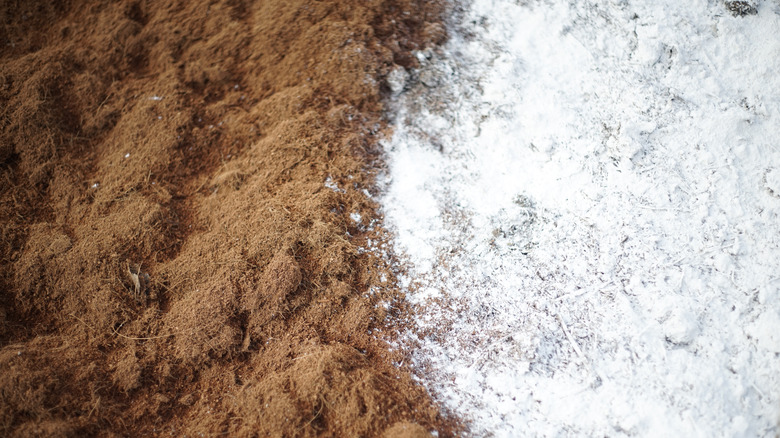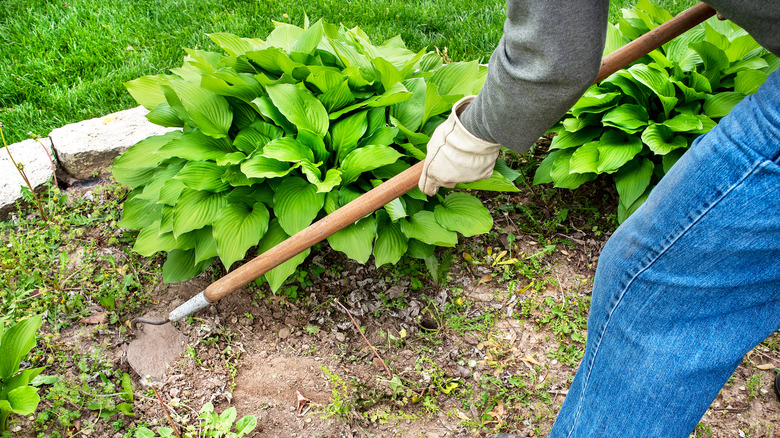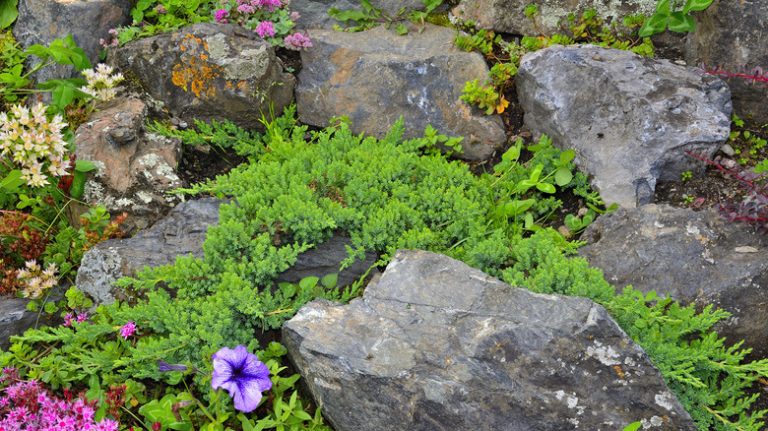Like so many plants we now consider common weeds, creeping Charlie was brought to the U.S. intentionally as an ornamental ground cover, and it quickly took over. This European native thrives in moist soils and shady areas. Unless your entire lawn has significant tree cover, you aren’t likely to face this weedy foe in your turf grass, but creeping Charlie can be a battle to control in shade gardens. It may be tempting to alter the acidity of your soil to make it less appealing to creeping Charlie, but doing so may come at the cost of your other landscape plants.
Before we dive into control options for this pesky plant, let’s discuss identification. When you see creeping Charlie, you might understand why early settlers brought it with them. The leaves of this ground cover feature attractive scalloped edges, while the vine produces tiny blue blooms. The name creeping Charlie comes from its ability to spread across the ground, producing roots along the stem. These roots, known as stolons, make the plant a challenge to eradicate, because even if you think you have removed all the vines, just one section of stem with stolons can spread and grow.
The impact of changing soil pH

To combat creeping Charlie, it’s been suggested that you can raise the soil pH to make it more alkaline. The claim is backed by the theory that by boosting the alkalinity of the soil, creeping Charlie cannot grow or thrive. The problem with this concept is that this plant, like most weeds, is adaptable to a range of soil conditions. In fact, it can thrive in soils that are mildly alkaline to mildly acidic, between 7.5 and 5 pH. This broad range is where most plants survive. The thing is, by adding amendments like lime to make the soil so alkaline that even weeds will not grow, it will also make it uninhabitable for your landscape plants.
Most greenery thrives in neutral to slightly acidic soils, because this range allows the maximum amount of nutrients in the soil to be absorbed. Not only will an overly alkaline soil environment leave you with a dying garden, but correcting the problem is not easy. While there are several ways to quickly make the soil more alkaline, the process of increasing acidity takes much more time and amending, and typically involves sulfur.
Control options for creeping Charlie

Raising the soil pH in your landscape may not the best method for dealing with creeping Charlie, but there are plenty of options for removing it. Unless you have a large garden bed that has been taken over with this weed, the simplest solution is to remove it by hand. Wear gloves while pulling creeping Charlie because, for some, it can cause skin irritation. Never add weeds to your compost pile or anywhere they can take root. Throw them in the garbage or burn the discarded plants.
If you eradicate a bed full of weeds, consider suffocating it with a thick layer of cardboard topped with mulch, chopped leaves, or pine needles. This will kill all the problematic weeds, and you can use this process around existing landscape plants. Just make sure no sunlight reaches the problem areas. For those in a hurry to eradicate creeping Charlie immediately, look for a liquid herbicide that contains triclopyr or dicamba. Once your landscape is free of weeds, keep it covered with 2 to 4 inches of mulch to keep new seeds from sprouting.



